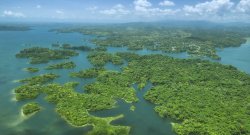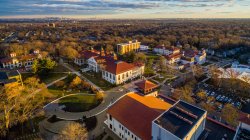Connecting the Rainforest to Classrooms Around the World
When it comes to using interactive videoconference technology to connect students in K-12 classrooms with scientists and experts, Jacalyn Giacalone Willis, founding director of Professional Resources in Science and Mathematics (PRISM) — the K-12 education center of Montclair State’s College of Science and Mathematics — is an international innovator.
Since 2003, PRISM’s Rainforest Connection project has linked researchers and educators at the Smithsonian Tropical Research Institute in Panama with students, teachers and experts in countries such as the United States, Australia, Belize, Costa Rica and Kenya. This past winter, 875 students took part in 46 sessions from 17 schools in 11 New Jersey school districts and one Michigan district.
“The Rainforest Connection engages teachers and students in an international conversation about environmental and conservation issues,” says College of Science and Mathematics Acting Dean Lora Billings. “It provides the first steps in forging global collaborations that can lead to sustainable solutions.”
A noted naturalist, Willis visits Panama each February to oversee and participate in the Rainforest Connection webcasts. In 2017, her “Classrooms Without Walls” project, bolstered by a University Global Education Center grant, expanded the Rainforest Connection by forging sustainable partnerships among teachers, students and scientists in New Jersey, Panama and Kenya.

This year, Willis expanded the innovative program by connecting with colleagues in Madagascar and Bhutan.
While in Panama, Willis also takes an annual census of endangered wildlife on Barro Colorado Island. Using camera traps, she and her husband, Greg, have collected more than 1 million photos over 22 years — and walked hundreds of kilometers to take a trail census. “These long-term studies help guide conservation decisions,” she says.
While the Willises are often seen on programs ranging from Animal Planet to the Smithsonian Channel, in March their work was shown on primetime television in Panama for the first time through TELEMETRO. “My aim was to gain popular support for the conservation of ocelots and other native cats — and for the remaining forests,” Willis recalls.
